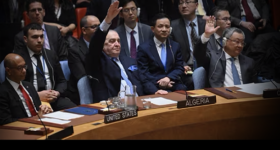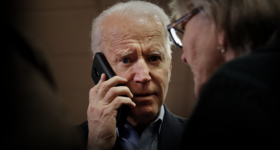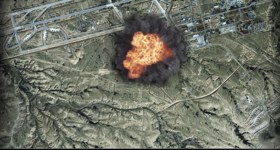
Former US Secretary of State John Kerry with Iranian Foreign Minister Javad Zarif and Hossein Fereydoun, the brother of Iranian President Hassan Rouhani. (Photo: U.S. Department of State. Source: Wikicommons)
Hossein Askari
The Globe Post
The United States incurred 450,000 casualties in WWII and over $4 trillion (adjusted for inflation) in treasure, fighting Germany, Italy, and Japan. The country then suffered further losses of life and capital in the Korean War, Vietnam War, Afghanistan, Iraq, and surrogate conflicts with Russia and China.
But today, the U.S. is allied with Germany, Italy, and Japan. Better relations with these former foes followed relatively soon after the war. Post-war developments have been similar in other conflicts, with security arrangements and renewed commercial ties. No matter how costly the war, once ended, a just armistice signals a decisive end and ushers in a new beginning, a clean start. The decks are cleared, so to speak.
With Iran, the U.S. has had no war and no armistice. There has been no end and thus, no new beginning. There is instead a troubled history, with third parties stoking the fires, media-propagated misinformation, an inability to understand each other, and the American labeling of Iran as “enemy number one.”
Iranian Coup
The troubled history of Iran-U.S. ties, beginning soon after WWII, is at the foundation of broken relations today. During the war, Iran was invaded by Russia from the north and by the U.K. from the south. After the war, Russia was unwilling to leave northwestern Iran. It was the United States standing firm that forced Russia to leave Iran. Iran and the U.S. had a great start after WWII.
Then, in 1953, after the duly elected Prime Minister Mohammad Mossadegh nationalized Iran’s oil, the U.K. embargoed Iran’s oil. The CIA joined the British MI6 to remove Mossadegh and restore the Shah to the throne. An oil consortium was formed by the U.S. and the U.K. to control Iran’s oil industry for their own benefit.
For the next 25 years, the U.S. supported the Shah’s increasingly oppressive regime, which was highly unpopular with the religious establishment and underprivileged. Widespread uprisings prompted the Shah to leave Iran in January 1979, ushering in the Iranian Revolution and the formation of the Islamic Republic in April 1979…
Continue reading this story at The Globe Post
Read Part II of this article: US Isolation of Iran and a Regional War Nobody Wants
Read Part III of this article: What Will it Take for Iran and US to Bury the Hatchet?
***
Author Hossein Askari is an Emeritus Iran Professor of International Business and International Affairs at the George Washington University. In 1991, he was asked by the governments of Iran and Saudi Arabia to mediate and restore their diplomatic relations and by the government of Kuwait to improve relations with Iran
READ MORE IRAN NEWS AT: 21st Century Wire Iran Files
SUPPORT THIS INDEPENDENT MEDIA PLATFORM– BECOME A MEMBER @21WIRE.TV















